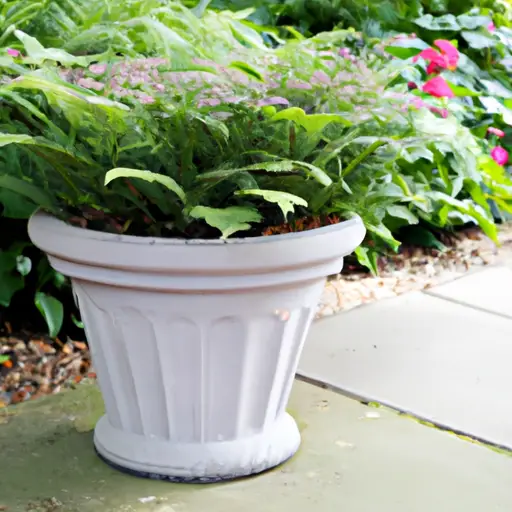The Art of Container Gardening: Tips and Tricks to Get Started
Container gardening has become increasingly popular in recent years, as more people are realizing the joys and benefits of growing plants in small spaces. Whether you have a balcony, patio, or even just a windowsill, container gardening allows you to bring nature into your home and create beautiful displays of plants and flowers. In this article, we will explore the art of container gardening and provide you with valuable tips and tricks to help you get started.
Choose the Right Containers
When it comes to container gardening, selecting the right containers is crucial. The size, material, and drainage capabilities of your containers can greatly affect the growth and health of your plants. Generally speaking, larger containers are better as they provide more space for root growth and allow for better water retention. Materials like terracotta or ceramic are popular choices, as they are aesthetically pleasing and provide good drainage. However, do keep in mind that these materials can dry out quickly in hot weather. Plastic or resin containers are lightweight and retain moisture better but may not look as appealing.
Select the Appropriate Plants
Choosing the right plants for your container garden is essential for success. Consider factors such as the available sunlight, temperature range, humidity levels, and wind conditions in your specific location. Some plants prefer full sun while others thrive in shade; some require consistent moisture while others can tolerate drying out between waterings. Researching about different plant varieties that suit your environment will help ensure their survival.
Think About Soil Needs
Paying attention to soil quality is vital when setting up a container garden. Regular garden soil is often too heavy for container gardening; therefore, it’s recommended to use a high-quality potting mix or a combination of potting soil and compost. These mixes typically contain added nutrients which promote healthy root development.
Watering Techniques
Proper watering techniques are crucial for maintaining healthy container gardens. Containers can dry out quickly, especially in warm weather, so it’s important to monitor moisture levels regularly. Use your finger to check the soil’s moisture level; if it feels dry to the touch, it’s time to water. Water until it drains out of the bottom of the container, ensuring thorough hydration. In hot weather, you may need to water your plants more frequently than usual. However, be careful not to overwater as this can lead to root rot and other issues.
Consider Fertilizing
Container gardens often require additional nutrients as potted plants quickly deplete the available nutrients in their small growing environment. Regularly fertilize your plants with slow-release fertilizer or use liquid fertilizer according to the specific needs of each plant species. This will help keep your container garden healthy and vibrant throughout the growing season.
Arranging Your Container Garden
Creating an aesthetically pleasing container garden is all about arrangement and combination. Consider the height and spread of each plant when deciding where to place them in your containers. Place taller plants towards the back or center and trailing or shorter plants towards the front or outer edges of your containers for a visually appealing display. Alternatively, you can experiment with different color combinations or themes to create a unique garden experience.
Maintenance and Care
Regular maintenance is essential for keeping your container garden looking its best. Remove dead leaves or spent blooms regularly, as they not only look untidy but can also attract pests or diseases if left unattended. Keep an eye out for any signs of pests or diseases that may affect your plants; early detection is key in preventing them from spreading throughout your entire garden.
Protecting Your Container Garden from Climate Extremes
Container gardens are more susceptible to extreme temperatures as compared to traditional gardens planted in the ground. In hot weather, move your containers into a shaded area during peak sun hours or use shade cloths to protect them from excessive heat. In cold weather, wrap your containers with insulating materials or bring them indoors overnight to prevent frost damage. Maintaining an appropriate climate for your container garden will greatly contribute to its overall success.
Experiment and Have Fun
Container gardening is a creative and rewarding activity, so don’t be afraid to experiment and have fun along the way. Try growing different plant varieties, mix and match colors and textures, and explore various container arrangements. Remember that gardening is a continuous learning process, so embrace the opportunity to try new things while enjoying the beauty of nature in your own space.
In conclusion, container gardening allows you to bring nature into small spaces and create beautiful displays of plants and flowers. By choosing the right containers, selecting appropriate plants, providing suitable soil, watering correctly, fertilizing adequately, arranging your garden thoughtfully, maintaining diligently, protecting from climate extremes, and having fun with experimentation, you can delve into the art of container gardening with confidence. So grab some containers, gather your plants, roll up your sleeves, and let your creativity bloom!













